Embark on a green adventure with our guide to Trees That begin with ‘J’. Discover the beauty and diversity of these lesser-known tree species, perfect for nature enthusiasts and curious minds alike.
Trees are amazing. They give us clean air, shade and beauty. Some have names trees that start with the letter ‘J’. Let’s explore these special trees together.
1. Japanese Maple
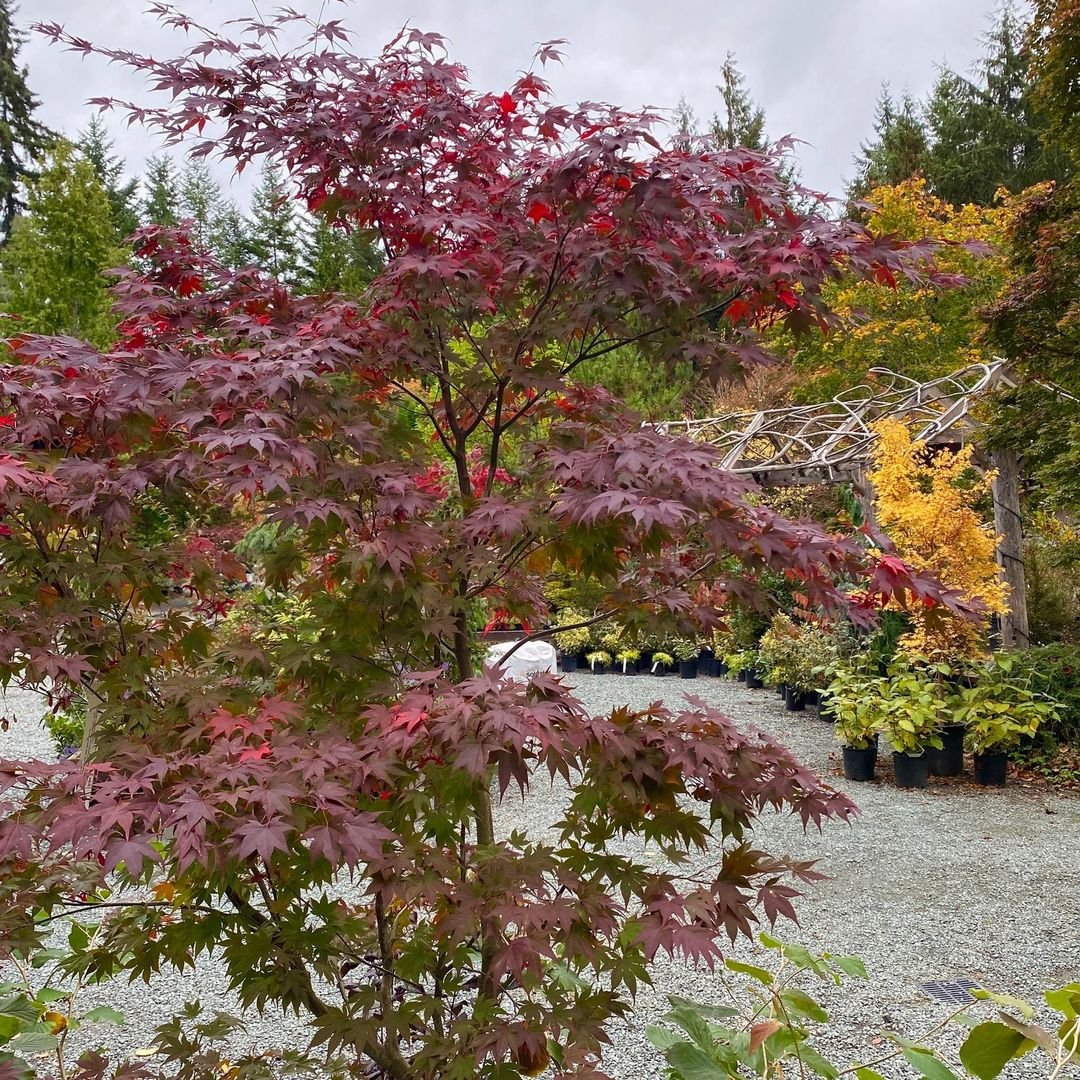
Here’s a short information chart about the Japanese Maple tree:
| Feature | Description |
|---|---|
| Scientific Name | Acer palmatum |
| Family | Sapindaceae (Soapberry family) |
| Native to | Japan, Korea, China |
| Height | Typically grows 10-25 feet tall, depending on the variety |
| Leaves | Palmate (hand-shaped), deeply lobed, usually red or green, turning vibrant colors in autumn |
| Bark | Smooth when young, becoming rough and corky with age |
| Flowers | Small, inconspicuous, purple or red, appearing in spring |
| Fruits | Small, winged samaras (seeds), green turning to red |
| Growth Rate | Slow to moderate |
| Uses | Ornamental tree, prized for its foliage and shape |
| Cultivars | Numerous cultivars with varying leaf shapes, colors and growth habits |
| Hardiness Zones | Typically zones 5-8, some varieties more cold-hardy (down to zone 4) |
| Maintenance | Requires well-drained soil, protection from strong winds, regular watering |
The Japanese Maple is a small tree that many people love. It has pretty leaves that change color. In spring, they’re light green. In fall, they turn bright red or orange. This tree is perfect for small gardens or yards.
Japanese Maples grow slowly. They can live for a long time with good care. People often use them in Japanese-style gardens. But they look nice in any garden.
These trees like partial shade. They don’t do well in very hot sun. You should water them regularly, especially when young. Japanese Maples can grow in pots too. This makes them great for patios or balconies.
2. Jacaranda
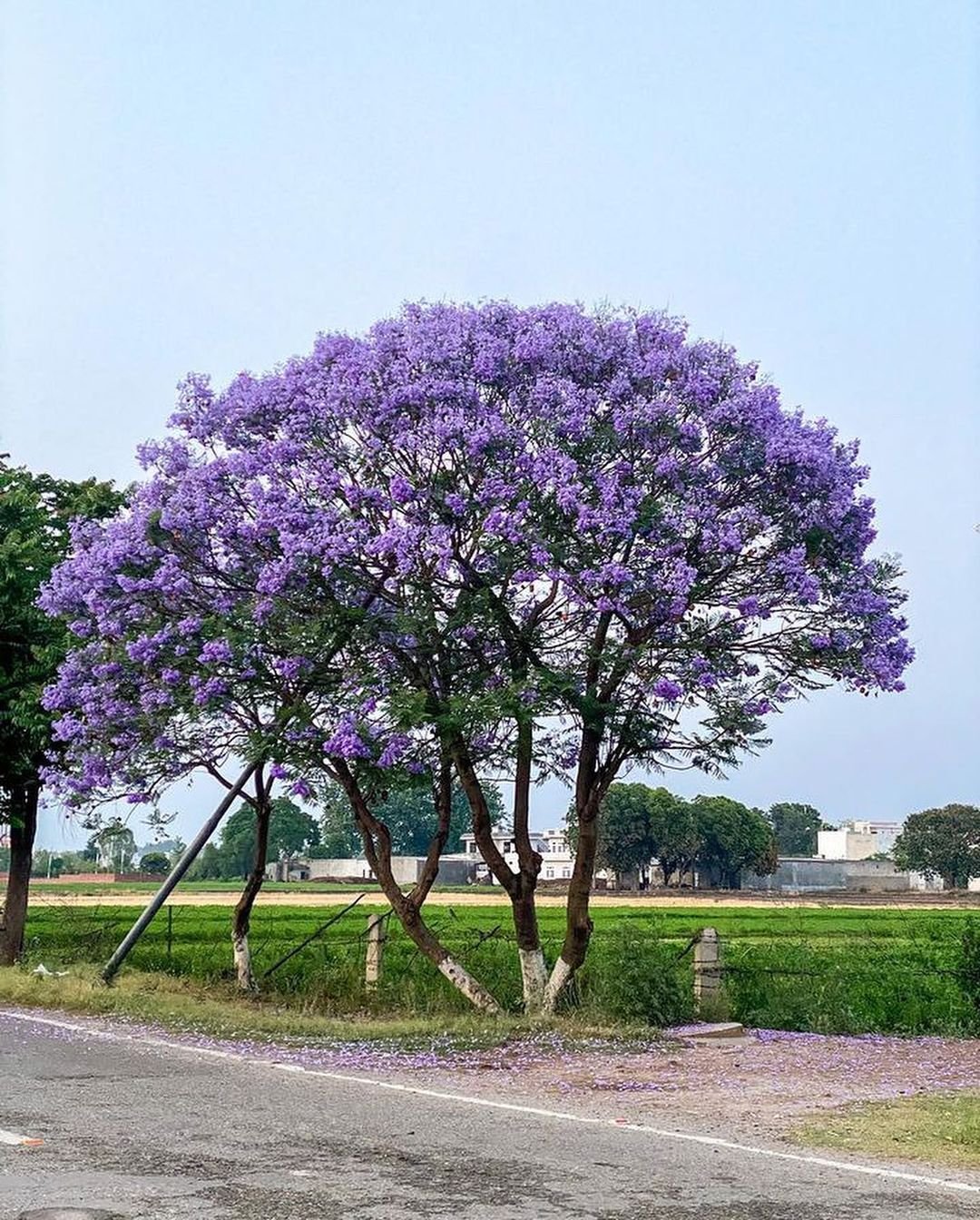
Here’s a concise information chart about the Jacaranda tree:
| Feature | Description |
|---|---|
| Scientific Name | Jacaranda mimosifolia |
| Family | Bignoniaceae (Trumpet vine family) |
| Native to | South America, particularly Argentina, Brazil and Uruguay |
| Height | Typically grows 25-50 feet tall, occasionally up to 60 feet |
| Leaves | Bipinnate, fern-like leaves, bright green, typically around 18 inches long |
| Flowers | Showy, trumpet-shaped, lavender to purple-blue flowers in spring |
| Fruits | Small, flattened capsules containing winged seeds |
| Bark | Grayish-brown, smooth when young, becoming rough and fissured with age |
| Habitat | Subtropical to tropical climates, prefers well-drained soil and full sun |
| Growth Rate | Moderate to fast |
| Uses | Ornamental tree, valued for its striking flowers and shade |
| Ecological Role | Provides habitat and food for birds and insects |
| Hardiness Zones | Typically zones 9-11, sensitive to frost and cold temperatures |
| Cultural Significance | Iconic tree in cities like Pretoria (South Africa) and Sydney (Australia), symbolizing beauty and grace |
Jacaranda trees are famous for their purple flowers. These flowers bloom in spring and early summer. They create a beautiful purple carpet on the ground. Jacarandas are native to South America. But now they grow in many warm parts of the world.
These trees can grow quite big. They need a lot of space. Jacarandas like full sun and well-drained soil. They don’t need much water once they’re grown.
Jacarandas are great shade trees. They also attract birds and bees. In some places, people plant them along streets. This creates stunning purple tunnels when they bloom.
3. Jack Pine
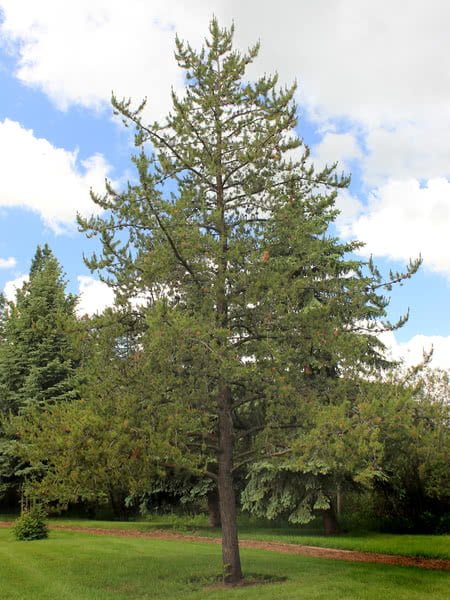
Here’s a short information chart about the Jack Pine:
| Feature | Description |
|---|---|
| Scientific Name | Pinus banksiana |
| Family | Pinaceae (Pine family) |
| Native to | North America, particularly Canada and the northern United States |
| Height | Typically grows 20-50 feet tall, occasionally up to 80 feet |
| Leaves | Needle-like leaves, 1-2 inches long, usually in pairs, bluish-green in color |
| Cones | Small, curved cones, 1-2 inches long, usually serotinous (open only after exposure to heat, like wildfires) |
| Bark | Thin, scaly, reddish-brown to gray in color |
| Habitat | Thrives in dry, sandy or rocky soils, often found in poor, acidic conditions |
| Growth Rate | Moderate to fast |
| Uses | Important for reforestation, erosion control and wildlife habitat |
| Ecological Role | Plays a crucial role in ecosystems like the boreal forest, providing habitat for various wildlife species |
| Hardiness Zones | Typically zones 2-6, tolerant of cold climates |
| Distinctive Features | Well-adapted to harsh environments, distinctive twisted trunk and sparse crown |
The Jack Pine is a tough tree. It grows in cold places where other trees can’t. This tree is native to North America. It’s important for wildlife. Many birds and animals use Jack Pines for food and shelter.
Jack Pines have a unique look. They often grow crooked or twisted. Their needles are short and come in pairs. The cones of Jack Pines need fire to open and release seeds. This helps the forest regrow after wildfires.
These trees don’t need rich soil. They can grow in sandy or rocky areas. Jack Pines grow fast when young. They’re often used to replant forests after logging or fires.
4. Juniper
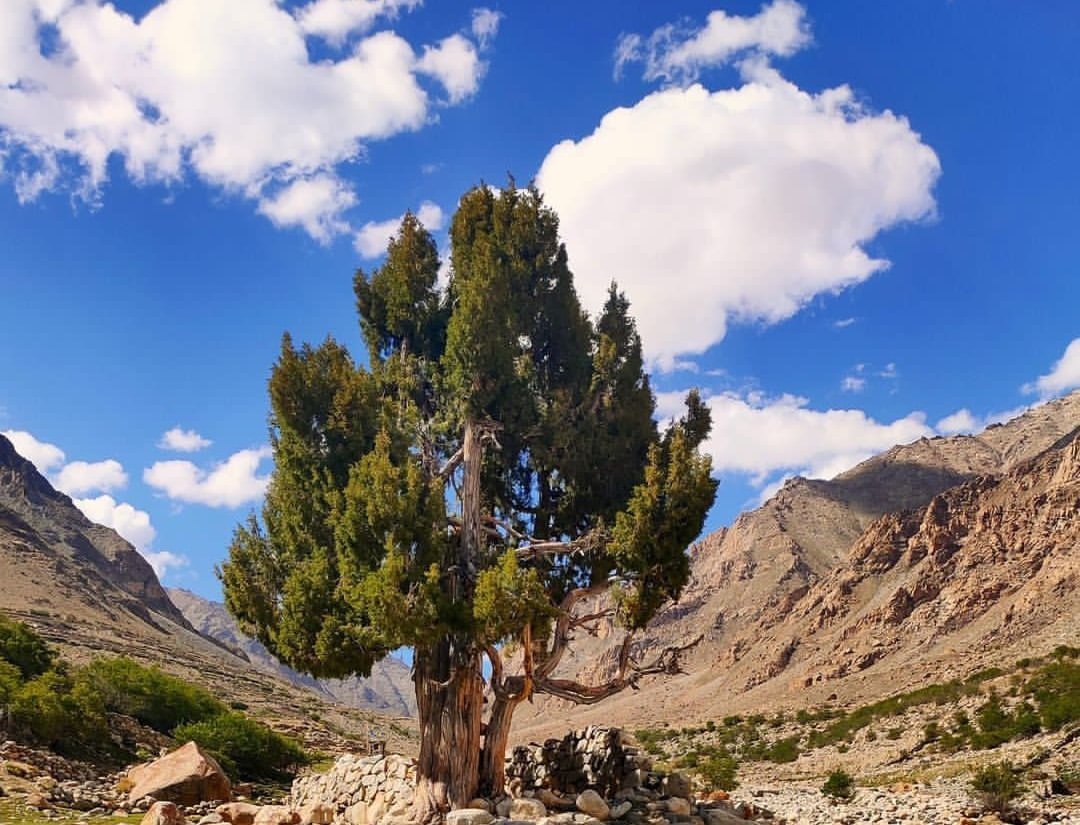
Here’s a concise information chart about Juniper:
| Feature | Description |
|---|---|
| Scientific Name | Juniperus spp. |
| Family | Cupressaceae (Cypress family) |
| Native to | Found throughout the Northern Hemisphere, including North America, Europe and Asia |
| Height | Varies widely by species; ranges from low ground covers to large trees |
| Leaves | Needle-like or scale-like leaves, often arranged in whorls or opposite pairs |
| Fruits | Cones or berry-like structures known as “juniper berries” |
| Bark | Usually thin, peeling or shredding in strips |
| Habitat | Diverse habitats including forests, mountains, deserts and coastal areas |
| Growth Rate | Generally slow to moderate |
| Uses | Ornamental plants, culinary flavoring (juniper berries), essential oils, gin production |
| Ecological Role | Important in ecosystems as food and shelter for wildlife, erosion control in dry environments |
| Hardiness Zones | Varies by species; many species are cold-hardy and adaptable |
| Distinctive Features | Aromatic foliage, drought-tolerant, often used in landscaping and as bonsai trees |
Junipers are evergreen trees or shrubs. There are many types of Junipers. Some are very small, like bushes. Others can grow into tall trees. Junipers are tough plants. They can live in many different climates.
These trees have small, scaly leaves. Some types have berries. These berries are used to flavor gin. Junipers are also important for wildlife. Birds eat the berries and nest in the branches.
Junipers are easy to grow. They don’t need much water. They can handle poor soil. Many people use Junipers in landscaping. They make good privacy screens or windbreaks.
5. Java Plum
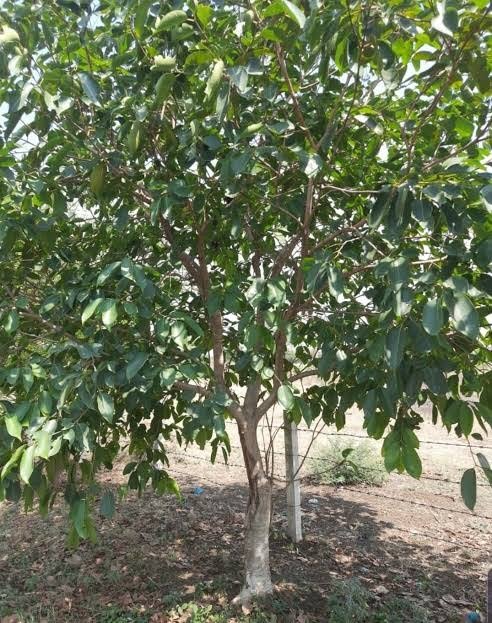
Here’s a short information chart about the Java Plum tree:
| Feature | Description |
|---|---|
| Scientific Name | Syzygium cumini |
| Family | Myrtaceae (Myrtle family) |
| Native to | South Asia, including India, Sri Lanka and Bangladesh |
| Height | Typically grows 15-30 feet tall, but can reach up to 50 feet in optimal conditions |
| Leaves | Glossy, dark green, elliptic to oblong in shape |
| Flowers | Small, white to cream-colored, fragrant flowers appearing in clusters |
| Fruits | Oval-shaped, purple to black berries (often called “Java Plum” or “Jamun”) |
| Bark | Brownish-gray, smooth when young, becoming rough and fissured with age |
| Habitat | Prefers tropical and subtropical climates, often found near riverbanks and in moist forests |
| Growth Rate | Moderate |
| Uses | Fruits are edible and widely used in culinary preparations, especially in desserts and beverages |
| Ecological Role | Provides food for wildlife, contributes to biodiversity in its native range |
| Hardiness Zones | Typically zones 10-11, sensitive to frost |
| Cultural Significance | Important in traditional medicine in South Asia for its medicinal properties |
The Java Plum is also called Jambolan or Black Plum. It’s a tropical tree native to India and Southeast Asia. This tree gives tasty fruit. The fruit looks like small, dark purple plums.
Java Plum trees can grow quite tall. They have thick, dark green leaves. The trees bloom with small white flowers. These flowers turn into fruit.
People eat Java Plum fruit fresh. They also use it to make jams and wines. In some cultures, different parts of the tree are used in medicine. The wood is strong and used for building.
6. Joshua Tree
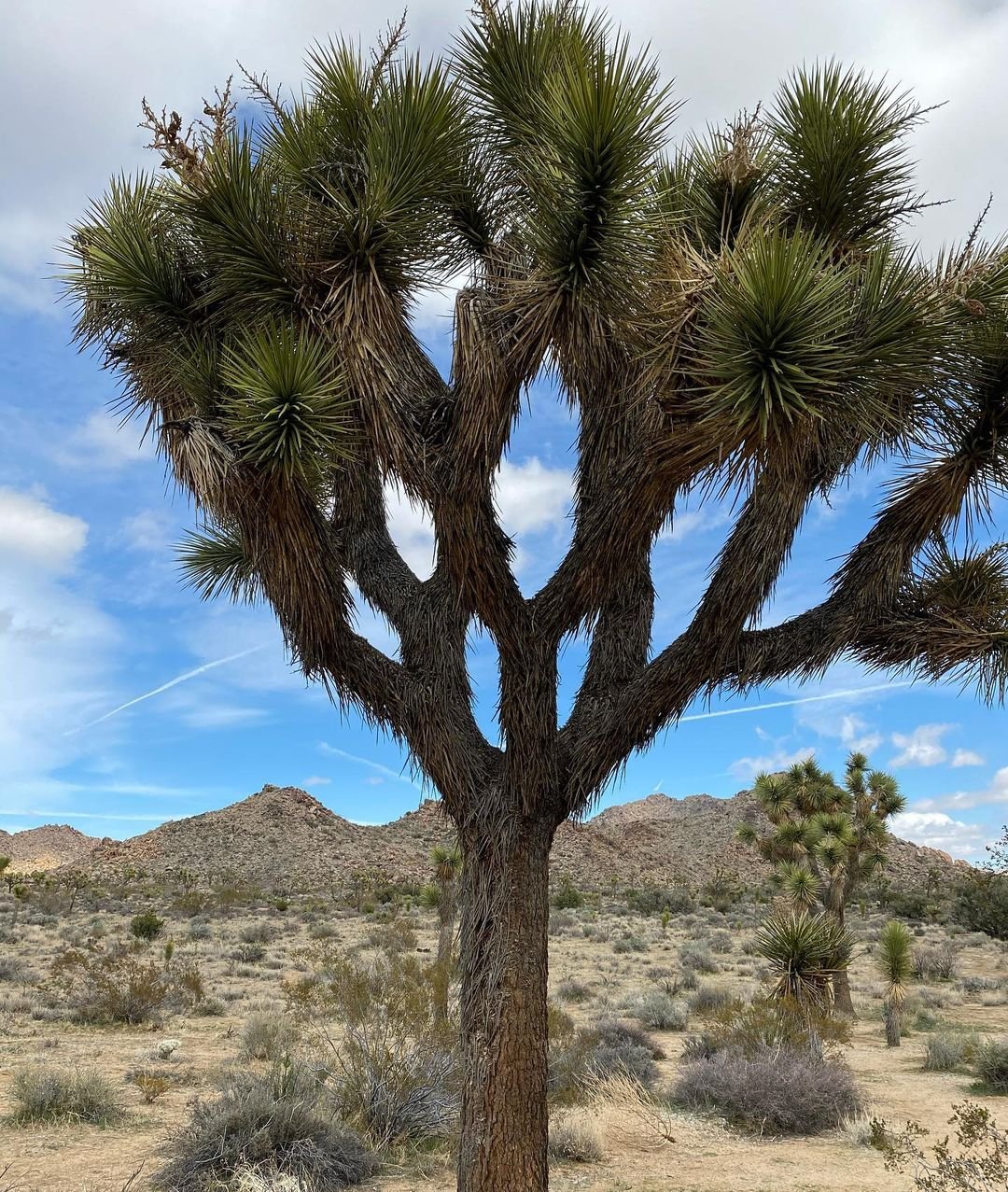
Here’s a concise information chart about the Joshua Tree:
| Feature | Description |
|---|---|
| Scientific Name | Yucca brevifolia |
| Family | Asparagaceae (Asparagus family) |
| Native to | Southwestern United States (California, Arizona, Nevada, Utah) and northwestern Mexico |
| Height | Typically grows 15-40 feet tall, occasionally up to 50 feet |
| Leaves | Long, stiff, dagger-like leaves clustered at the ends of branches |
| Flowers | Creamy white, bell-shaped flowers, bloom in spring |
| Fruits | Green, fleshy, seed-containing capsules |
| Bark | Brownish-gray, rough and fibrous |
| Habitat | Arid desert regions, particularly Mojave Desert and parts of Sonoran Desert |
| Growth Rate | Slow-growing, can live for hundreds of years |
| Uses | Important wildlife habitat, iconic symbol of the Mojave Desert |
| Ecological Role | Provides food and shelter for wildlife such as desert tortoises and birds |
| Adaptations | Succulent characteristics, able to store water in its trunk and roots |
| Conservation Status | Vulnerable due to threats like climate change, habitat destruction and invasive species |
Joshua Trees are very special. They’re not really trees. They’re a type of yucca plant. But they can grow as tall as trees. Joshua Trees grow in the Mojave Desert in the United States.
These plants have a unique look. They have thick, spiky leaves. The trunk can split into many branches. Joshua Trees grow very slowly. Some can live for hundreds of years.
Joshua Trees are important for desert wildlife. Many birds nest in them. The flowers feed moths and other insects. These trees need protection. Climate change is making it hard for them to survive.
7. Judas Tree
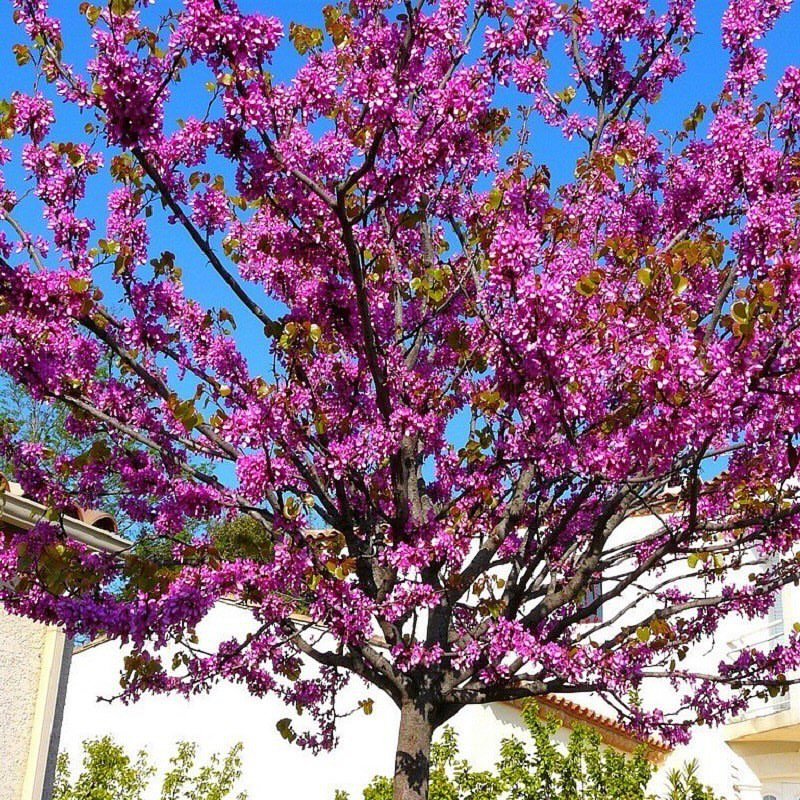
Here’s a concise information chart about the Judas Tree:
| Feature | Description |
|---|---|
| Scientific Name | Cercis siliquastrum |
| Family | Fabaceae (Legume family) |
| Native to | Mediterranean region, including southern Europe and western Asia |
| Height | Typically grows 15-25 feet tall, occasionally up to 40 feet |
| Leaves | Heart-shaped to broadly ovate, typically glossy green |
| Flowers | Bright pink to magenta, pea-like flowers, appear in clusters in spring |
| Fruits | Flat, brown pods (legumes) containing seeds |
| Bark | Smooth, gray when young, becoming rough and fissured with age |
| Habitat | Thrives in sunny locations, often found in scrublands, hillsides and open woodlands |
| Growth Rate | Moderate |
| Uses | Ornamental tree prized for its colorful spring flowers and attractive foliage |
| Ecological Role | Provides nectar for pollinators like bees and butterflies |
| Hardiness Zones | Typically zones 7-9, tolerant of a range of soil types and conditions |
| Cultural Significance | Named after the biblical figure Judas Iscariot, associated with folklore and historical references |
The Judas Tree is also called the Eastern Redbud. It’s a small tree native to eastern North America. This tree is famous for its pink or purple flowers. These flowers bloom in early spring, before the leaves appear.
Judas Trees have heart-shaped leaves. They turn yellow in fall. The tree gets its name from a legend. People said Judas hanged himself from this type of tree. But this isn’t true. The name probably comes from the French word ‘Judée’, meaning Judea.
These trees are great for small gardens. They attract butterflies and bees. The flowers are edible. Some people use them in salads. Judas Trees are easy to grow. They like full sun or partial shade.
8. Japanese Zelkova

Here’s a concise information chart about the Japanese Zelkova:
| Feature | Description |
|---|---|
| Scientific Name | Zelkova serrata |
| Family | Ulmaceae (Elm family) |
| Native to | Japan, Korea, eastern China |
| Height | Typically grows 50-80 feet tall, occasionally up to 100 feet |
| Leaves | Alternate, serrated, elliptic to ovate, turning bronze, red or purple in autumn |
| Bark | Smooth and gray when young, becoming grayish-brown and flaky with age |
| Flowers | Inconspicuous, greenish-yellow, appearing in spring |
| Fruits | Small, green drupes turning brown when ripe |
| Habitat | Prefers well-drained soil, often found in parks, gardens and urban areas |
| Growth Rate | Moderate to fast |
| Uses | Popular ornamental tree, valued for its vase-like shape and autumn color |
| Ecological Role | Provides habitat and food for birds and insects |
| Hardiness Zones | Typically zones 5-8, tolerant of a wide range of conditions |
| Distinctive Features | Resistant to Dutch elm disease, adaptable to urban environments |
Japanese Zelkova is a beautiful shade tree. It’s native to Japan, Korea and eastern China. This tree has a nice, vase-like shape. It’s often used to replace Elm trees, which were killed by disease.
The leaves of Japanese Zelkova are oval and toothed. They turn orange or red in fall. The bark is smooth and gray. It peels off in patches as the tree gets older.
These trees can grow quite tall. They’re good for streets and parks. Japanese Zelkovas are tough. They can handle urban pollution and different soil types. They need regular watering when young.
9. Jackfruit

Here’s a concise information chart about the Jackfruit tree:
| Feature | Description |
|---|---|
| Scientific Name | Artocarpus heterophyllus |
| Family | Moraceae (Mulberry family) |
| Native to | Western Ghats of India; widely cultivated in tropical regions |
| Height | Typically grows 30-70 feet tall, occasionally up to 80 feet |
| Leaves | Large, leathery, glossy green, elliptic to oblong in shape |
| Fruits | Huge, spiky, green to yellowish-brown fruits, known as jackfruit |
| Bark | Smooth, gray to brown |
| Flowers | Small, yellowish or greenish, clustered on thick stems |
| Habitat | Tropical lowlands, often near rivers and in rainforests |
| Growth Rate | Rapid |
| Uses | Edible fruits with sweet, fibrous flesh; seeds used in cooking; wood for timber |
| Ecological Role | Provides food for wildlife, supports biodiversity in tropical ecosystems |
| Cultural Significance | Important in many tropical cuisines, considered a staple food in some regions |
| Hardiness Zones | Typically zones 10-12, sensitive to frost and cold temperatures |
The Jackfruit tree is amazing. It grows the largest tree fruit in the world. A single fruit can weigh up to 80 pounds! Jackfruit trees are native to South and Southeast Asia.
These trees are evergreen. They have large, glossy leaves. The fruit grows directly from the trunk and branches. Jackfruit trees can grow very tall in the wild.
The fruit of the Jackfruit tree is very nutritious. People eat it ripe as a sweet treat. Unripe fruit is used in savory dishes. It’s becoming popular as a meat substitute. The seeds are also edible when cooked.
10. Japanese Black Pine

Here’s a concise information chart about the Japanese Black Pine:
| Feature | Description |
|---|---|
| Scientific Name | Pinus thunbergii |
| Family | Pinaceae (Pine family) |
| Native to | Japan, Korea, China |
| Height | Typically grows 20-80 feet tall, depending on the environment and cultivation |
| Leaves | Needle-like leaves, dark green, twisted, typically in bundles of two |
| Bark | Dark gray to black, fissured and furrowed with age |
| Cones | Oval to conical, 2-4 inches long, often remaining on the tree for several years |
| Habitat | Coastal areas, sandy soils, often used in coastal dune stabilization |
| Growth Rate | Moderate to fast |
| Uses | Ornamental tree, often used in landscaping and bonsai cultivation |
| Ecological Role | Provides habitat for wildlife, including birds and small mammals |
| Cultural Significance | Symbolizes endurance and resilience in Japanese culture |
| Hardiness Zones | Typically zones 5-9, tolerant of a wide range of conditions |
Japanese Black Pine is a tough, beautiful tree. It’s native to Japan and Korea. This tree is often used in bonsai. But it can also grow into a large tree in nature.
These pines have dark green needles. They come in pairs and are quite long. The bark is gray and furrowed. Japanese Black Pines often have an interesting, twisted shape.
These trees are great for coastal areas. They can handle salt spray and strong winds. They also grow well in poor soil. Japanese Black Pines need full sun. They don’t like wet soil.
Trees that start with ‘J’ are diverse and interesting. From the small, colorful Japanese Maple to the huge, fruit-bearing Jackfruit, there’s a ‘J’ tree for every taste. Some, like the Jacaranda, are known for their beautiful flowers. Others, like the Jack Pine, are tough survivors in harsh conditions.
These trees play important roles in nature. They provide food and homes for wildlife. Many have uses in human culture too. We use their fruit, wood and even flowers.
Learning about these trees helps us appreciate nature more. It shows us how diverse and amazing the plant world is. Next time you’re outside, try to spot a tree that starts with ‘J’. You might be surprised by what you find!
Remember, trees are vital for our planet. They clean our air and help fight climate change. By learning about different types of trees, we can better understand how to protect them. This helps ensure that future generations can enjoy their beauty and benefits too.
Whether you’re a gardener, a nature lover or just curious, exploring trees that start with ‘J’ is a fun adventure. It opens up a whole new world of greenery to discover. So why not start your journey into the world of ‘J’ trees today?